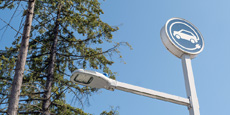Public EV charging

Charge on the go with our public EV chargers
With our public EV chargers strategically located along every major route, energy-based rates, and our 24/7 customer support, we're powering the transition to electric travel across British Columbia. Find your nearest charger in our growing network, plan your next road trip with public charging and access our help centre for your EV charging questions.
Log in to your BC Hydro EV Account
With your BC Hydro EV account, you'll have access to BC Hydro's growing network of public chargers across the province. You can also use the BC Hydro EV app to find chargers, view your charging activity, manage payments and update your account details.
You'll need an EV account to access our EV charging network and to use the BC Hydro EV app.
Create or log in to your EV account on desktop and on mobile for IOS or Android.







